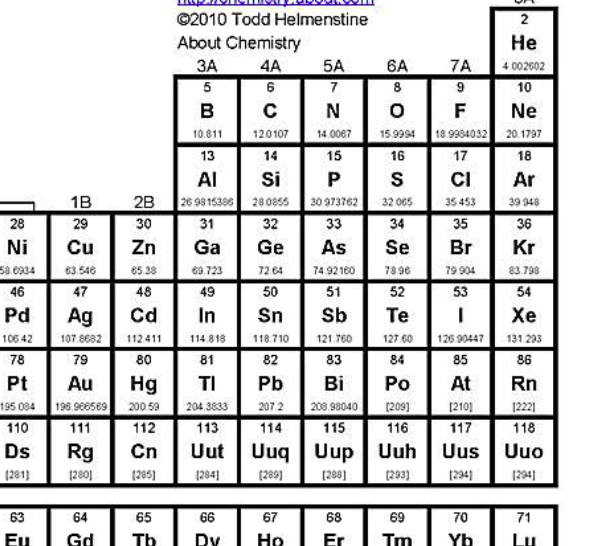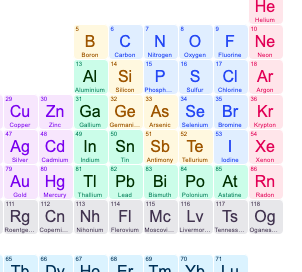Science (topic test)
1/35
There's no tags or description
Looks like no tags are added yet.
Name | Mastery | Learn | Test | Matching | Spaced |
|---|
No study sessions yet.
36 Terms

Identify the zig-zag line that separates the metals from non-metals/metalloids.
green+purple - metals
yellow - metalloids
blue - non-metals
red - noble gases

List five physical properties of metals
shiny
malleable
ductile
good conductors of heat
good conductors of electricity
List five physical properties of non-metals
dull (not shiny)
brittle
soft
poor conductors of heat
poor conductors of electricity
List at least 3 properties of Alkali metals
solid
soft
shiny
silvery-white colour
low melting point
very reactive
List at least 3 properties of Alkaline earth metals
shiny
silvery-white colour
low melting point
low boiling point
reactive under vigorous conditions
List at least 2 properties of Halogens
very reactive, especially with alkali and alkaline earth metals
coloured and poisonous vapours
non-metals
List at least 2 properties of Noble gases
not reactive
monatomic
colourless gases
non-metals
Describe the trend in chemical reactivity of metals going right across the periods and up the groups
Moving right across the periods and up the groups, metals become less reactive
What is the connection between an element’s electron configuration and its group number?
Elements in the same group have the same number of valency electrons
For the first 20 elements in the periodic table, what number of electrons belongs in each of the four shells?
2 in the first shell, 8 in the second shell, 8 in the third shell, and 2 in the fourth shell
OR 2n² where n is the amount of shells
What is the correlation between an element’s period number and electron configuration?
An element’s period number is the same as the number of electron shells it has
An elements atomic number is equal to its…
Number of protons.
(in neutral elements, it would also be equal to the number of electrons)
An elements number of neutrons is equal to its…
Mass number MINUS number of protons
What type of elements is an ionic bond between?
Metal and Non-metal
What type of elements is a covalent bond between?
Two non-metals
What type of elements is a metallic bond between?
Two metals
HCl
Hydrochloric acid
HNO₃
Nitric acid
H₂SO₄
Sulfuric acid
H₃PO₄
Phosphoric acid
H₂CO₃
Carbonic acid
CH₃COOH
Ethanoic acid
acid + base →
water + salt
acid + carbonate →
salt + water + carbon dioxide
acid + metal →
salt + hydrogen gas
NH₃
Ammonia
NO₃
Nitrate
Explain what electrolysis is
Electrolysis is when ionic substances are broken down into simpler substances when an electric current passes through them
What is an electrolyte?
An electrolyte is a substance that can be electrolysed; a substance that can be broken down into simpler substances when an electric current passes through them
Describe what happens during a metal displacement reaction
The more reactive metal will take the less reactive metal’s place in the compound
What happens to positively charged ions (cations) during electrolysis?
Cations move towards the cathode (the negative electrode). To neutralise them, they receive electrons and are reduced.
What happens to negatively charged ions (anions) during electrolysis?
Anions move towards the anode (the positive electrode). To neutralise them, they lose electrons and are oxidised.
Oxidation is…
Loss of electrons
Reduction is…
Gain of electrons
Cu²⁺ + 2e⁻ →
Cu
Cl⁻ - e⁻ →
Cl